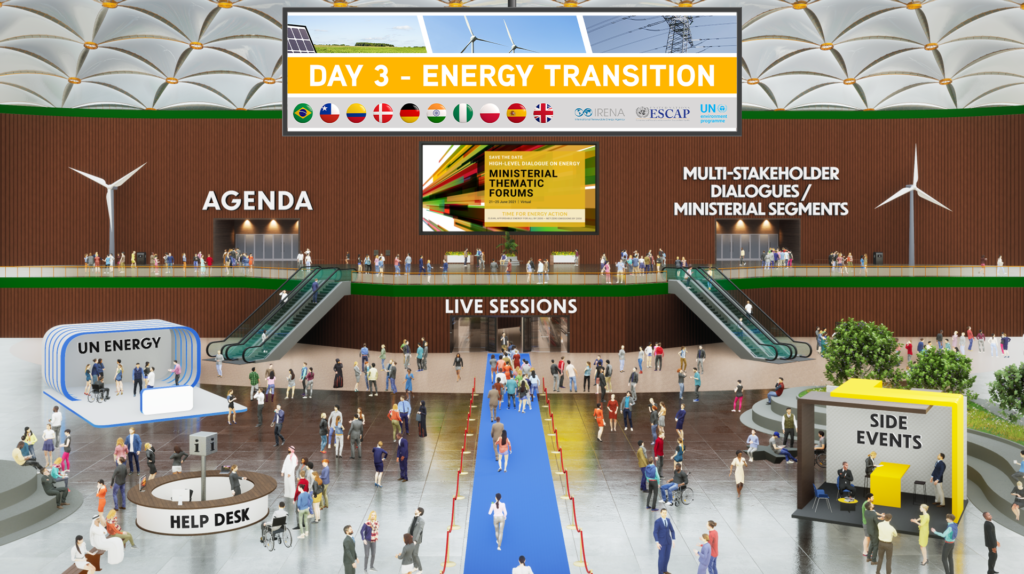Like in-person and virtual events, hybrid events have their own set of guidelines and best practices. To provide attendees with what they want from hybrid events, you still need to plan, attract audiences, and build your engagement, but in a different way. Hybrid events can be mixed or composite, where composite is when the in-person part of the event experience is separate from the virtual part of the event. Mixed is when you leverage the in-person experience with the virtual to generate new formats.
Choosing the right platform for the virtual side of the event and having event production partners with a live production team are two steps you can take to ensure that your event is mixed rather than composite. The key to creating the best-mixed experience is to understand which aspects of the event are most suitable for individual and virtual audiences and when and how to provide exclusive content from these two groups. Your event may have the function of enhancing the personal audience experience, while the opposite is true for virtual audiences—think loud noises—and vice versa.
The production team members should be experts in creating hybrid events, so they help you create engaging experiences for in-person and online audiences, no matter where you are in the planning process. An experienced audiovisual production team can help you provide a seamless experience for any audience in a mixed event. Whether you are hosting the in-person or virtual event side, the right equipment, and audiovisual resources can enhance attendees’ experience and speakers and help support the behind-the-scenes team to hold the event.
A simple hybrid event setup could be live streaming your presentations to virtual attendees using polling and chat functionality to keep everyone involved, including attendees, in person. By adding virtual elements to personal events, attendees can consume content on their schedule, giving them more leeway when creating their own event experience. The event experience created by this simple hybrid format can be a great way to start producing events. Start with simple hybrid formats to build the team and gain capabilities to scale the audience and/or the number of events.
Therefore, as event organizers and participants gain practical experience in taking advantage of the benefits of participating in virtual and traditional events, mixed events will become more accepted and popular with your audience. In many ways, hybrid events are technically more complex than just a virtual format, and the right tools can keep the two channels running smoothly to a large extent. Although there is no one-size-fits-all way to host an incredible mixed event, we believe that the best way to create a cohesive and engaging experience is to prioritize the virtual experience and create a seamless integration with the physical event space. However, brands that experiment and improve virtual and hybrid experiences will be the best choice for future event success and community participation.
As companies start coming back to events in person, they will want to combine the best of traditional events venues with virtual events to create more significant, more successful hybrid events. We will see more virtual and hybrid events combining the best of online experiences with on-site meetings. Focusing on the virtual side of the hybrid event is also a great option if you want to quickly plan something to avoid a potential crisis, a controversial issue, or share your experiences on issues currently in the news. There are also times when you might plan the in-person part of the event around the virtual component to have the most effective way to gather leads and engage your audience.
We know that networking or collaborating with a virtual and live audience will be a key goal for any participant. Networking is a crucial factor in attending any event, so finding ways to connect visitors personally and virtually is a great way to maximize your visitor satisfaction. Encouraging one-on-one meetings organized with your event technology can foster quality communication and relationship building. Discussing event content with small groups of remote participants can effectively help you get feedback, interact, and learn.
Another advantage of hybrid events is that the virtual events platforms that also do in-person events can offer advanced analytics even at every interaction with the audience. By integrating virtual event software or an event application for live and online visitors, virtually every user interaction can be tracked, stored, and analyzed to collect information to achieve the main goals and objectives of the events, whether it is creating leads, improving a product, impressive or a better marketing approach.
Thinking strategically now and going through the technical applications of the resources you have for upcoming events will help you bridge the digital divide. One example is how Hyatt recently launched a new set of innovative tools across many of its hotels to help planners run events on both digital and personal platforms. The program, dubbed Hyatt Together, gives planners access to a platform, which uses artificial intelligence to integrate virtual and on-premises experiences and a local team of hybrid experts who guide planners throughout the process. While this is primarily for in-person events it also offers a virtual component that allows people at home to access the same high-quality sessions and networking experience, making it a relevant hybrid event.
When you leverage the best in-person and virtual event formats, you allow visitors to choose the experience that best suits their habits, schedule, and budget. These include multiple parallel sessions, speakers, and tracks streamed live or on-demand and required different ways for participants to interact with the event content. Good examples of programs that only work best in virtual format are panel discussions on current affairs or political issues, interview-style programs, or educational events of 90 minutes or less.
Here are the top eight best practices for hybrid event productions:
- Choose a digital platform that has strong virtual and in-person features.
- The production team members should be experts in creating hybrid events.
- Start with simple hybrid formats to build the team and gain capabilities to scale over time.
- The best way to create a cohesive and engaging experience is to prioritize the virtual experience and create a seamless integration with the in-person event.
- Encouraging one-on-one meetings organized with your event technology can foster quality communication and relationship building.
- A virtual events platforms that also does in-person events can offer advanced analytics even at every interaction with the audience. Measure everything and learn.
- Think strategically and go through the technical applications of the resources so your upcoming events can build one upon the other.
- Allow visitors to choose the experience that best suits their habits, schedule, and budget.
Some of these best practices are common amongst event producers but finding all eight is difficult, since most prefer to rely on in-person events or just the virtual event, whichever they are more familiar with.
Sources
https://www.brella.io/blog/create-powerful-networking-experiences-at-hybrid-events
https://meetingtomorrow.com/blog/behind-the-scenes-hybrid-event-production/
https://eventscase.com/blog/7-best-practises-for-hybrid-events
https://www.press.org/live-virtual-or-hybrid-events-which-approach-best
https://blog.onstreammedia.com/virtual-event-production
https://rde.stanford.edu/conferences/av-requirements-digital-and-hybrid-events
https://www.meetingsnet.com/event-tech-virtual-meetings/5-must-know-tips-great-hybrid-events


